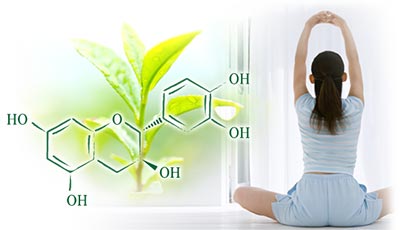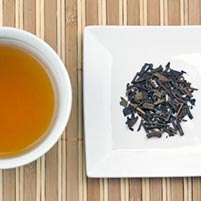All teas, including green, black, and oolong, come from processing the leaves of Camellia sinensis, commonly known as the tea plant.

Green teas are made by steaming or roasting the fresh tea leaves, while other types of teas are made utilizing different degrees of fermentation.
Japanese green teas retain their fresh color, delicate flavor, and beneficial antioxidants precisely because they are processed quickly after harvest without undergoing the oxidizing effects of fermentation.
Each type of green tea has its characteristics and flavor, but not all have a green color, though most do.
The word “green” denotes teas which are not fermented, including teas such as Hojicha, which has a reddish-brown color.
Green Tea Health Benefits
 The US National Library of Medicine (PubMed) lists over 3,600 clinical and experimental studies showing links between green tea consumption and health.
The US National Library of Medicine (PubMed) lists over 3,600 clinical and experimental studies showing links between green tea consumption and health.
Drinking two cups of green tea per day helps
- Combat skin's aging process
- Protect skin from sun damage
- Increase immunity
- Reduce cholesterol levels
- Improve cardiovascular health
- Mitigate cancer cell growth
What about weight loss? The jury is still out. While many studies suggest that green tea may help you lose weight, others show no effect. However, green tea is always a healthier choice than sugary drinks.
Green tea's health benefits in large part come from its polyphenols, called EGCG catechins. On average, 100 grams of green tea contains about 7 grams of EGCG. In contrast, black tea contains less than 1 gram.
The EGCG disparity between green and black teas is due to the difference in the way they are processed. Black teas are fermented, which oxidizes a large portion of their polyphenols — while green teas maintain most of their original polyphenols because they are treated by steaming or roasting instead of fermentation.
Green Teas Flavors and How to Brew
Sencha
 Sencha is by far the most popular tea in Japan. It has a well-balanced combination of umami and aroma, and goes well with light and medium meals, sweets, and snacks.
Sencha is by far the most popular tea in Japan. It has a well-balanced combination of umami and aroma, and goes well with light and medium meals, sweets, and snacks.
Brew in a teapot by adding simmering (not boiling) water. Use 1 teaspoon of sencha per cup of water. Overly hot water will result in bitterness. Boil the water first, and then cool by pouring it in separate cups before adding to the teapot.
Brew time: 1-2 minutes
Color: Light yellowish green
Flavor: Fresh vegetal, mildly sweet and aromatic
Konacha
 Konacha is an economical, delicious green tea. It is the typical tea served at sushi restaurants. Konacha is quick and easy to prepare and goes well with almost any meal.
Konacha is an economical, delicious green tea. It is the typical tea served at sushi restaurants. Konacha is quick and easy to prepare and goes well with almost any meal.
Brew in a teapot by adding near-boiling water. Use 1 teaspoon of konacha per cup of water.
Brew time: 1 minute
Color: Yellowish green
Flavor: Light, refreshing aftertaste
Hojicha
 Hojicha is charcoal-roasted green tea. If you are not partial to vegetal taste which most green teas have, this tea is for you.
Hojicha is charcoal-roasted green tea. If you are not partial to vegetal taste which most green teas have, this tea is for you.
Hojicha goes well with almost any meal. It is very low in caffeine, and a good choice even before going to bed at night.
Brew in a teapot by adding near-boiling water. Use 1 teaspoon of hojicha per cup of water.
Brew Time: 2 minutes
Color: Reddish brown
Flavor: Earthy, roasty, nutty
Genmaicha
Genmaicha is a fun symphony of roasted brown rice and fresh, vegetal flavor of green tea. Because of its rice content it is low in caffeine and suitable for all ages.
Brew in a teapot by adding near-boiling water. Use 1 teaspoon of green tea per cup of water.
Brew Time: 1-2 minutes
Color: Yellow green
Flavor: Fresh, roasted rice, popcorny
Bancha
 Bancha is economical, everyday green tea and a good choice as accompaniment for diets.
Bancha is economical, everyday green tea and a good choice as accompaniment for diets.
Also comes in aged variety (san-nen-bancha). The aging process lowers tea's tannin and caffeine and increases its mineral and antioxidant content.
Brew in a teapot by adding near-boiling water. Use 1 teaspoon of green tea per cup of water.
Brew Time: 2 minutes
Color: Reddish brown
Flavor: Smooth, grassy, summer vegetal
Kamairicha
 Kamairicha is a highly sophisticated, pan-roasted green tea, and an excellent choice for serving on special occasions.
Kamairicha is a highly sophisticated, pan-roasted green tea, and an excellent choice for serving on special occasions.
Kamairi teas account for only about 2% of Japanese tea production, due to the high level of skill and care required in its production process.
Brew in a teapot by adding simmering (not boiling) water. Use 1 teaspoon of kamairicha per cup of water. Overly hot water will result in bitterness. Boil the water first, and then cool by pouring it in separate cups before adding to the teapot.
Brew Time: 1-2 minutes
Color: Yellowish green
Flavor: Medium-light, moderately sharp and distinct, slight roasty
Matcha
 Matcha is fine-powdered green tea, commonly used in the Japanese tea ceremony.
Matcha is fine-powdered green tea, commonly used in the Japanese tea ceremony.
Matcha's health benefits by far exceed those of any other type of green tea. When you drink matcha, you ingest the whole tea leaf in powder form, not just the brewed water.
Besides tea, match is in a variety of recipes including latte, muffins, cookies, and ice creams. Japanese also mix it with coarse salt to make matcha zhio — a traditional garnishing for your vegetable, seafood, and other dishes.
You need a whisk to make matcha. Dry your cup with a soft towel. Add one teaspoon of matcha to one cup of simmering water (overly hot water will result in bitterness.) Briskly whisk till it develops a soft foam. Serve.
Brew Time: Whisk to a froth
Color: Jade green
Flavor: Rich, savory

